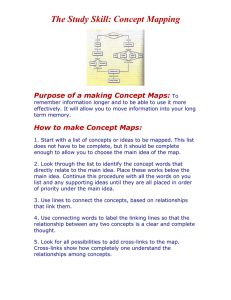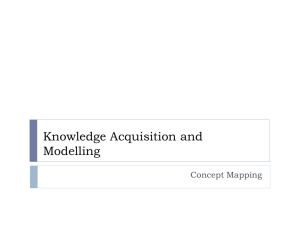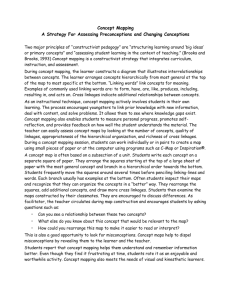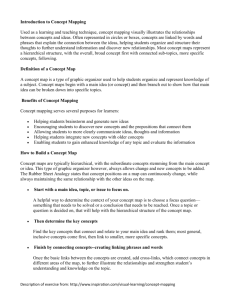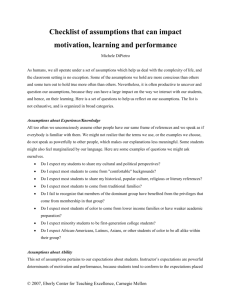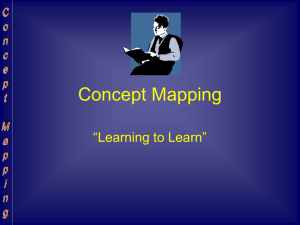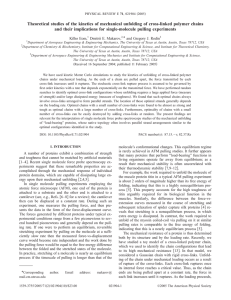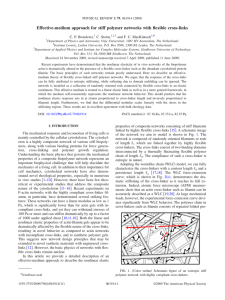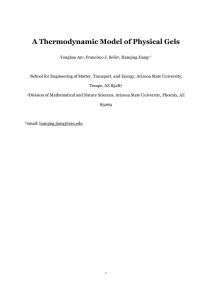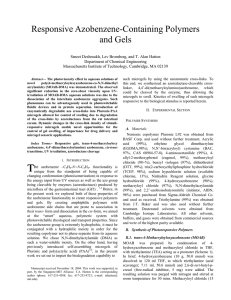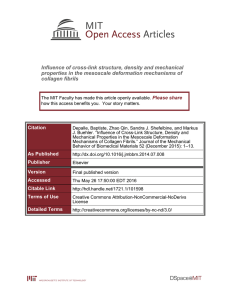How to Create Concept Maps - Carnegie Mellon University
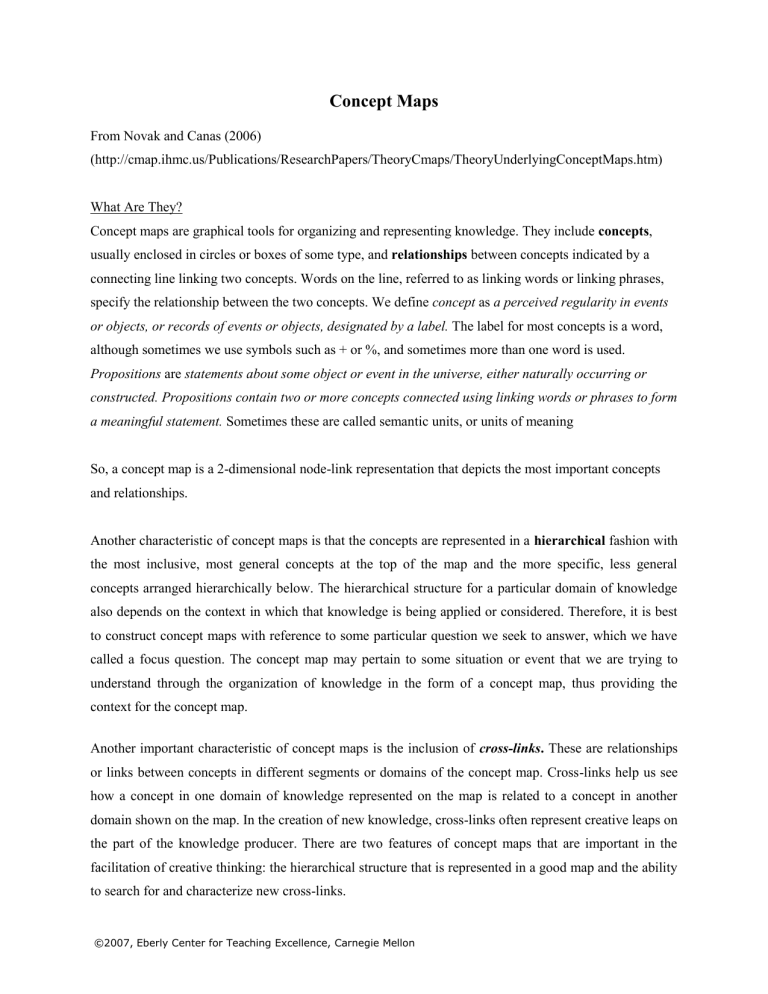
Concept Maps
From Novak and Canas (2006)
(http://cmap.ihmc.us/Publications/ResearchPapers/TheoryCmaps/TheoryUnderlyingConceptMaps.htm)
What Are They?
Concept maps are graphical tools for organizing and representing knowledge. They include concepts , usually enclosed in circles or boxes of some type, and relationships between concepts indicated by a connecting line linking two concepts. Words on the line, referred to as linking words or linking phrases, specify the relationship between the two concepts. We define concept as a perceived regularity in events or objects, or records of events or objects, designated by a label.
The label for most concepts is a word, although sometimes we use symbols such as + or %, and sometimes more than one word is used.
Propositions are statements about some object or event in the universe, either naturally occurring or constructed. Propositions contain two or more concepts connected using linking words or phrases to form a meaningful statement.
Sometimes these are called semantic units, or units of meaning
So, a concept map is a 2-dimensional node-link representation that depicts the most important concepts and relationships.
Another characteristic of concept maps is that the concepts are represented in a hierarchical fashion with the most inclusive, most general concepts at the top of the map and the more specific, less general concepts arranged hierarchically below. The hierarchical structure for a particular domain of knowledge also depends on the context in which that knowledge is being applied or considered. Therefore, it is best to construct concept maps with reference to some particular question we seek to answer, which we have called a focus question. The concept map may pertain to some situation or event that we are trying to understand through the organization of knowledge in the form of a concept map, thus providing the context for the concept map.
Another important characteristic of concept maps is the inclusion of cross-links.
These are relationships or links between concepts in different segments or domains of the concept map. Cross-links help us see how a concept in one domain of knowledge represented on the map is related to a concept in another domain shown on the map. In the creation of new knowledge, cross-links often represent creative leaps on the part of the knowledge producer. There are two features of concept maps that are important in the facilitation of creative thinking: the hierarchical structure that is represented in a good map and the ability to search for and characterize new cross-links.
©2007, Eberly Center for Teaching Excellence, Carnegie Mellon
A final feature that may be added to concept maps is specific examples of events or objects that help to clarify the meaning of a given concept. Normally these are not included in ovals or boxes, since they are specific events or objects and do not represent concepts.
How Do I Construct One?
A good way to define the context for a concept map is to construct a Focus Question , that is a question that clearly specifies the problem or issue the concept map should have to resolve. Every concept map responds to a focus question, and a good focus question can lead to a much richer concept map. When learning to construct concept maps, learners tend to deviate from the focus question and build a concept map that may be related to the domain, but which does not answer the question.
Given a selected domain and a defined question or problem in this domain, the next step is to identify the key concepts that apply to this domain. Usually 15 to 25 concepts will suffice. These concepts could be listed, and then from this list a rank ordered list should be established from the most general, most inclusive concept, for this particular problem or situation, to the most specific, least general concept.
Although this rank order may be only approximate, it helps to begin the process of map construction. We refer to the list of concepts as a parking lot , since we will move these concepts into the concept map as we determine where they fit in. Some concepts may remain in the parking lot as the map is completed if the mapmaker sees no good connection for these with other concepts in the map.
The next step is to construct a preliminary concept map.
It is important to recognize that a concept map is never finished. After a preliminary map is constructed, it is always necessary to revise this map. Other concepts can be added. Good maps usually result from three to many revisions.
©2007, Eberly Center for Teaching Excellence, Carnegie Mellon

